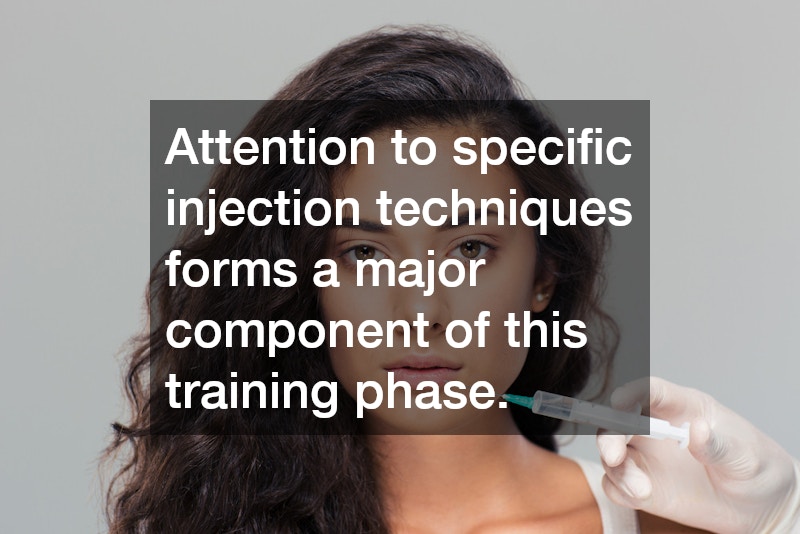Botox and Dysport are prominent names in the world of cosmetic procedures, lauded for their effectiveness in reducing wrinkles and revitalizing facial aesthetics. Becoming proficient in administering these neuromodulators requires comprehensive training. This article delves into what aspiring practitioners can expect from Dysport and Botox training courses, empowering them to deliver professional and effective results.
Understanding the Basics of Neuromodulators
Before delving into advanced techniques, it is crucial for trainees to grasp the fundamental nature of neuromodulators. Botox and Dysport are both derived from botulinum toxin, a purified protein that temporarily reduces muscle activity.
These agents are commonly used to manage facial lines and enhance the overall aesthetics of the facial features. During training, participants are introduced to the biochemical behavior of these products, allowing them to understand how the molecules interact with muscle receptors. Knowing the basics helps practitioners make informed decisions regarding treatment plans and dosage amounts for their clients.
Comprehensive Dysport training involves an in-depth discussion on the differences and similarities between Botox and Dysport. Though they both serve similar functions, they differ in formulation, diffusion, and onset of action. These variations can influence the choice of treatment depending on the client’s specific needs and desired outcomes. By understanding these nuances, trainees are better equipped to recommend the most suitable product for individual cases. This foundational knowledge sets the stage for further exploration into specific application techniques.
In addition to product differentiation, trainees are educated on muscle anatomy and the identification of injection sites. Knowledge of facial muscle structure is critical to achieving desired results while minimizing potential side effects. During training, participants often engage in hands-on activities that involve marking injection sites on mannequins or models, providing practical experience in a controlled environment. This hands-on practice is crucial for developing confidence and precision, essential qualities for effective application. Mastering the basics of neuromodulators serves as the cornerstone of subsequent training modules.
Practical Application and Techniques
The practical segment of Dysport and Botox training is where theoretical knowledge is translated into hands-on skills. Trainees are guided through the process of preparing and administering injections safely and effectively. A key focus is on maintaining hygiene and minimizing the risk of infection, which is fundamental to patient safety and treatment success. Under the supervision of experienced instructors, participants practice injection techniques on artificial skin or volunteer models. This immersive experience ensures that they develop the finesse needed to perform procedures with confidence and precision.
Attention to specific injection techniques forms a major component of this training phase. Different facial areas require varied approaches and techniques; for instance, treating crow’s feet differs from addressing forehead lines. Specialized methods are taught to ensure optimal product placement, adherence to desired outcomes, and patient comfort. Trainees learn about factors such as injection depth, needle angle, and pressure to achieve effective results while minimizing discomfort. Mastery over these techniques is pivotal for a practitioner’s ability to tailor treatments to meet the individual needs of their clients.
Assessment of real-life scenarios plays an integral role in the practical application of knowledge. Trainees are often presented with case studies and asked to plan treatments based on client backgrounds and objectives. This exercise emphasizes critical thinking and problem-solving, encouraging participants to apply their learning in realistic contexts. Feedback and mentoring from seasoned instructors provide invaluable insights into honing decision-making capabilities. Together, the combination of theoretical understanding and practical application fosters a well-rounded, competent practitioner ready to embark on their professional journey.
Safety Protocols and Ethical Considerations
The focus on safety protocols and ethical considerations is paramount in any medical training program. Aspiring practitioners are taught the importance of adhering to strict hygiene standards to prevent complications and ensure client safety. Training emphasizes the significance of obtaining informed consent and maintaining transparent communication with clients about potential risks and benefits. Discussion often includes managing client expectations and ensuring realistic portrayal of anticipated results. This knowledge is critical to fostering trust and maintaining professional standards in cosmetic practices.
A significant aspect of Dysport training involves navigating the legal landscape of administering injectables. Trainees are educated on regulations and licensure requirements that vary by region, ensuring compliance with industry standards. Beyond legalities, the training expands on ethical dilemmas that practitioners may encounter, stressing the importance of prioritizing client welfare over commercial interests. Participants engage in case discussions and role-playing exercises to practice handling ethical challenges. Being well-versed in these protocols enables practitioners to build sustainable, reputable practices.
Trainees are encouraged to cultivate a client-centric approach as they embark on their careers in aesthetics. This involves emphasizing patient education, empowering clients to make informed decisions about their treatments. Practitioners are urged to adopt a long-term perspective on client relationships, focusing on responsible practice and adherence to ethical norms. Continuous education and staying abreast of advancements in the field are emphasized as essential components for maintaining a reputable practice. Ultimately, this commitment to safety and ethics fosters enduring client trust and satisfaction, critical to career success in cosmetic dermatology.







